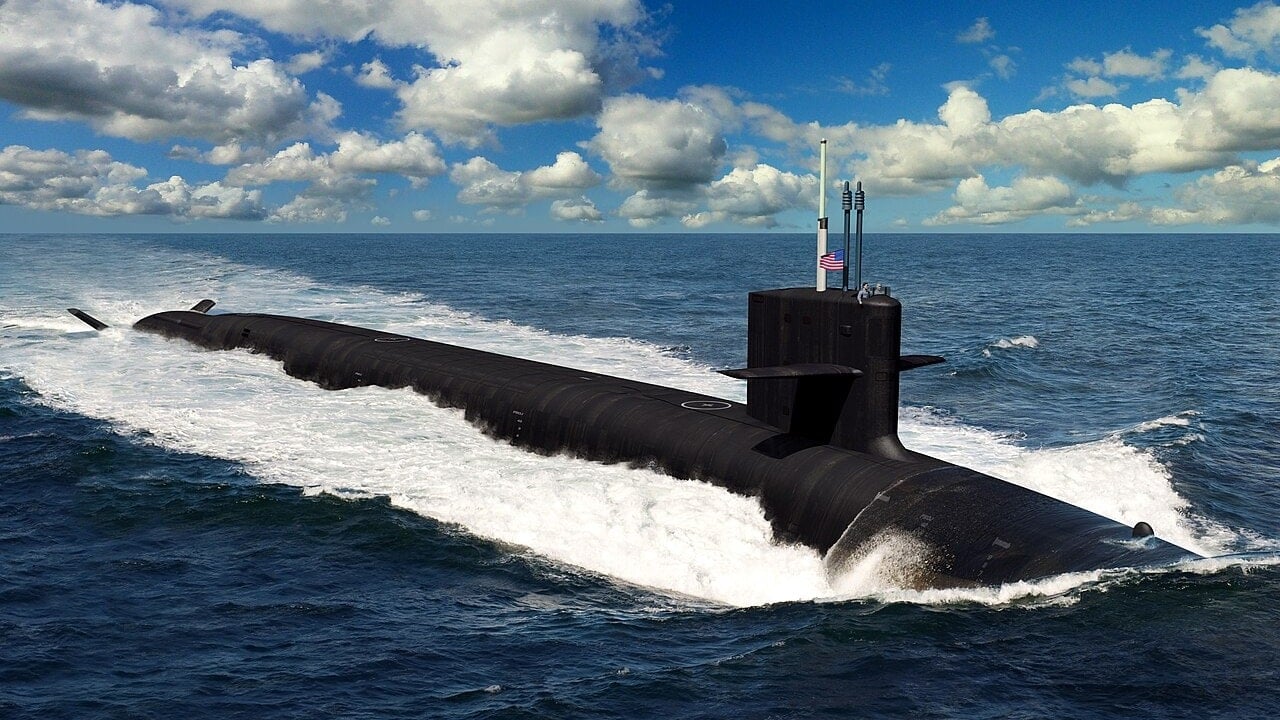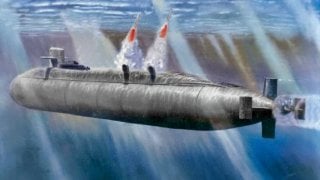Columbia-Class: The Navy's New Missile Submarine Faces 'Significant Delays'
The U.S. Navy's Columbia-class ballistic missile submarine program is encountering significant delays and cost overruns, as highlighted in a September 30 report by the Government Accountability Office (GAO).
What You Need to Know: The U.S. Navy's Columbia-class ballistic missile submarine program is encountering significant delays and cost overruns, as highlighted in a September 30 report by the Government Accountability Office (GAO).

-The lead submarine's projected cost has surged to approximately $8.6 billion, potentially creating a capability gap between the retirement of the Ohio-class submarines in 2027 and the Columbia-class becoming operational by 2031.
-Over seven years, the GAO has issued thirteen recommendations to enhance the program's efficiency and reduce expenses. To address these issues, the GAO suggests revising cost estimates, detailed cost analyses, production improvements, enhanced quality assurance for outsourced work, and updated outsourcing plans.
Navy’s Columbia-Class Submarine Program Faces Cost Overruns and Delays
The Navy's $130 billion investment in twelve Columbia-class subs aims to replace the existing fourteen Ohio-class ballistic missile submarines, ensuring continued nuclear deterrence despite current challenges.
The Navy’s new ballistic missile submarine program is facing additional delays that could potentially create a capability gap, a government office has found.
In its latest report on the progress of the Columbia-class ballistic missile submarine, the Government Accountability Office (GAO) could cost hundreds of millions of extra dollars and come with a significant delay.
The GAO Report
In a report released on September 30, the GAO estimates that the submarine program could cost hundreds of millions of dollars more and bring the total to around $8.6 billion for the lead submarine.
This is not the first time the GAO has identified issues with the development of the Columbia class submarine. Over seven years, the government office has made thirteen recommendations to make the program more efficient and less costly. Frequent assessments have pointed out increasing costs and issues with the program’s maturation, design, and construction.
As these challenges persist, there is a real danger that the new class of nuclear submarines won’t be ready in time, causing operational and strategic headaches to military planners.
In terms of timeline, the Navy plans to start retiring the Ohio-class subs in 2027, while the first Columbia-class vessel needs to be operational and underway by 2031. If there are delays in either the retirement of the Ohio-class or the introduction of the Columbia-class, the Navy runs the risk of creating a capability gap in its contribution to the country’s nuclear deterrence.
The latest assessment indicates that the USS Columbia, the lead ship of the new subclass, will come with a delay ranging from one year to sixteen months.
Overall, the Navy plans to invest as much as $130 billion in the new class of nuclear-powered submarines. The funds will go to the research, design, development, and purchase of twelve Columbia class subs. These twelve subs will replace the current fleet of fourteen Ohio-class ballistic missile subs.
The U.S. Navy has the largest submarine force in the world, with over seventy subs. The majority of warships are nuclear-powered attack submarines designed and kitted to find and sink enemy warships and merchant vessels. A handful of subs are converted missile-guided subs that can pack and fire hundreds of Tomahawk land-attack cruise missiles. Finally, the fourteen Ohio class ballistic missile subs carry nuclear warheads and are ready at all times to wage nuclear warfare.
How to Fix the Problem
In its report, the GAO offers five recommendations to the Navy on how to fix the problem and ensure that the Columbia-class subs are on time and within budget.
Specifically, the GAO recommends that the Navy push the shipbuilder to revise its estimated cost at completion, make the shipbuilder provide a detailed analysis of all costs in its reporting, identify whether production improvements and cost savings from supplier development funding are helping, ensure that the shipbuilder has the resources and staffing to conduct quality assurance oversight of any outsourced work and ensure that the shipbuilder provides an updated plan for any outsourced work.
Building a submarine, let alone a new class of submarines is a taxing job. And as the Chinese military recently discovered, it is rife with dangers.
About the Author
Stavros Atlamazoglou is a seasoned defense journalist specializing in special operations and a Hellenic Army veteran (national service with the 575th Marine Battalion and Army HQ). He holds a BA from the Johns Hopkins University and an MA from the Johns Hopkins’ School of Advanced International Studies (SAIS). His work has been featured in Business Insider, Sandboxx, and SOFREP.
Image Credit: Creative Commons and/or Shutterstock.


